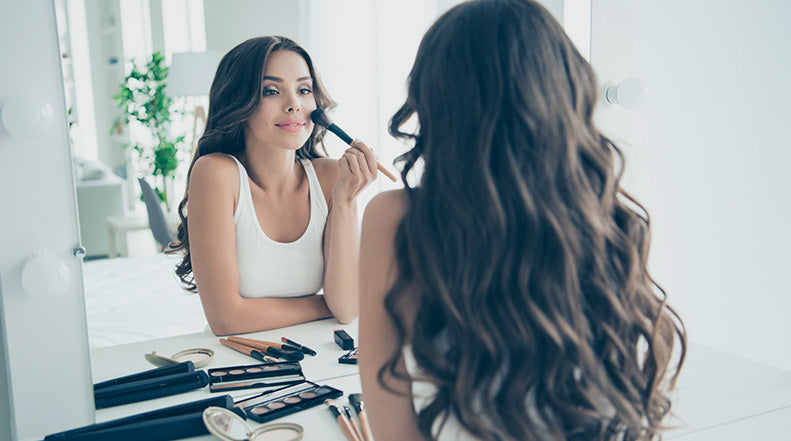What You Need to Know About Retinoids

Retinoid and retinol are terms often used interchangeably, but they are not the same thing. Retinoid is the generic term for all topical products that contain derivatives of vitamin A. Although these ingredients can be excellent additions to your anti-aging regimen, choosing the right retinoid product can be a bit confusing. Here is an overview of some of the different types of retinoids and how to incorporate them into your regular skincare routine.
RETINYL PALMITATE
Retinyl palmitate is a combination of pure retinol and palmitic acid. Palmitic acid is typically used in cosmetics as a cleansing agent, so it must be converted to retinaldehyde and then all-trans retinoic acid within the skin in order to be effective. Because of this, retinyl palmitate is the weakest form of retinoid. There are two problems with retinyl palmitate. The first being, you’re getting retinol that is bound to a fatty acid so each percentage (or portion of a percentage) you’re getting of retinol is actually significantly more weighty, bulky fatty acid.
The second problem with retinyl palmitate is that the concentration is rarely listed. It is illegal in the US to put concentrations with percentages on labels — this is why many products will say “Retinol 0.5” and not 0.5%. Many brands will still let you know what’s in their products by putting it on their websites and various marketing materials though. But with retinyl palmitate you will never see this and if you did it would have to be something like “Retinyl Palmitate 2.5” to have the same efficacy as Retinol 0.5.
RETINOL
Retinol is the most popular form of retinoid and is found in many anti aging skincare products on the market. It is a very potent and effective anti-aging ingredient, that works by deactivating the matrix metalloproteinases which break down collagen. It also increases cell turnover, and improves skin’s moisture retention. Experts report that retinol should be used at night only, in small quantity (aim for a pea-size amount that will make a thin layer on your face) after cleansing. Do not use it in conjunction with alpha hydroxy acids (AHAs) like glycolic and lactic acid. If you are using retinol, you have to pair it with a sunscreen every morning, because retinoids/retinol make your skin more sensitive to the sun. Most experts recommend using retinol products once every 2 to 3 nights during the initial 2 to 3 weeks.
Side effects of retinol include skin irritation, desquamation, and redness. In addition, use of dietary vitamin A derivatives and certain topical forms has been associated with birth defects, and so it is advisable for women who are pregnant, breastfeeding, or those who may become pregnant to avoid use of retinol.
TRETINOIN
Tretinoin or all-trans retinoic acid is a lipid-soluble molecule that possesses an acidic component (specifically a carboxylic acid group) at one end and a lipid-soluble component (specifically a beta-ionone ring) at the other, with a long polyunsaturated carbon chain linking the two. Tretinoin is fantastic because it can address both acne and photodamage, which is a rare quality. It’s worth mentioning that Tretinoin is the only chemical to date to receive FDA approval for anti-aging and anti-sun damage properties. Tretinoin is one of the strongest retinoids and can be found in many prescription strength treatments like Retin-A and Renova.
Other, less common, forms of retinoids include; Adapalene, Tazarotene, and Isotretinoin. These are primarily found in prescription medications as opposed to over the counter cosmetic products. Many consider retinoids essential skincare ingredients and some recommend to start using them as early as age 21 to help your skin resist aging as well as fight acne.
HOW TO USE RETINOIDS
Retinoids are known to cause peeling, redness, and irritation so the best approach is to slowly begin using these products to help limit side effects. When introducing any type of retinoid to your skincare regimen, follow these steps:
- Apply one small pea-sized amount of a retinoid product to clean, dry face. (Another pea size can be used for the neck or arm or each additional area to be treated.)
- If you have very sensitive skin you may want to apply the retinoid at night as your last step overyour moisturizer.
- Wait about four days before reapplying to see how your skin will react. It takes 3-4 days for the side effects from the first application to become apparent.
- After waiting four days, begin applying the retinoid at night every third night.
- If, after two weeks, you don’t experience any side effects, bump up your application to every other night for another two weeks.
- If you’re still tolerating this routine well, start applying the retinoid every night.
If you have sensitive or dry skin, you may need to stay at step four indefinitely, and that’s okay. It is better to progress more slowly than to struggle with side effects and end up discontinuing the product as a result.




Comments